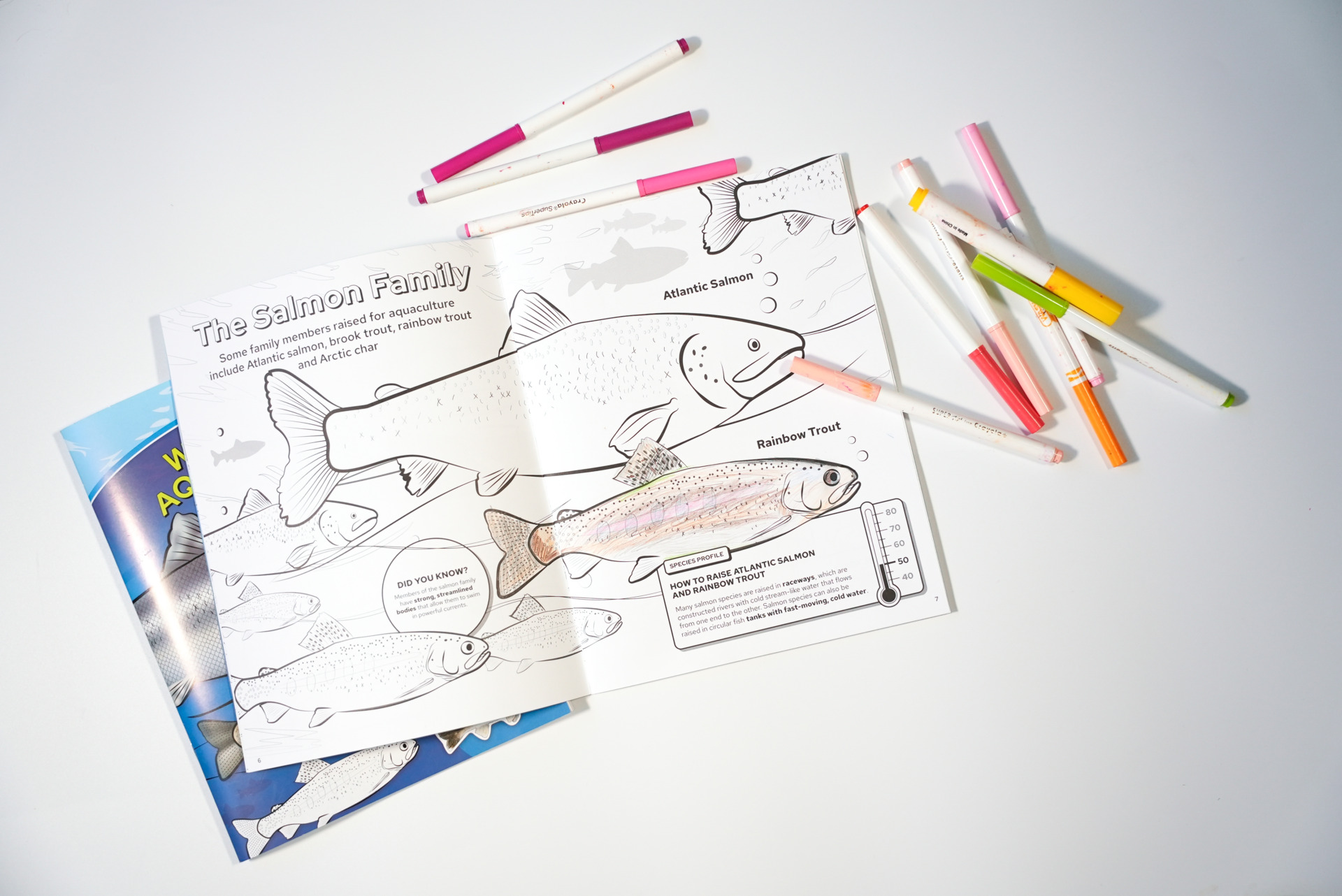By Tim Campbell
‘Tis the season to spread some holiday cheer, and of course, ‘tis always the season to spread aquatic invasive species awareness. With some inspiration from Al House, one of our advisory council members, I put together an AIS version of the classic “The Twelve Days of Christmas.” Enjoy not only the song, but some commentary from yours truly!
On the twelfth day of Christmas, a freighter sent to me: As many know, ballast from large ocean-going vessels has been identified as the primary invasion pathway of invasive species into the Great Lakes and since a freighter can send things, I think it makes a great start to the song.
Twelve quaggas clogging – Quagga mussels are now the dominant invasive mussel in Lake Michigan. A congener (a member of the same genus) of zebra mussels, the quagga mussel can tolerate colder water and colonize soft substrates. These abilities have helped it colonize most of benthic Lake Michigan. Just like zebra mussels, quagga mussels are quite effective at clogging water intake pipes and other infrastructure. Mitigating these impacts has cost Great Lakes residents millions of dollars.
‘Leven gobies gobbling – Round gobies are very effective egg predators. Their advanced lateral line system (a series of fish sensory organs) allows them to find eggs that native benthic egg predators are unable to. The round goby’s fondness for fish eggs has affected restoration efforts of lake trout and lake sturgeon, and has caused managers to alter fishing regulations to protect nesting smallmouth bass.
Ten alewives croaking – Alewives are one of the few invasive species that foul Great Lakes beaches throughout the summer. Until the introduction of Pacific salmon, alewives died off in such great numbers that tractors were required to remove them from beaches. Salmon now do a great job controlling alewife numbers, but there are still alewife die-offs due to spawning-related stresses.
Nine eggs in resting – The spiny waterflea and the fishhook waterflea produce tiny resting eggs that can survive long after the mature waterflea has perished. The resting eggs can also survive extreme environmental conditions, so it is imperative to make sure that recreational equipment is cleaned to prevent spreading these invasive crustaceans. Luckily, their Wisconsin distribution is limited to Lake Michigan, Lake Superior, the Madison Lakes, and a few other inland lakes.
Eight shrimp ‘a swarming – The bloody red shrimp, Hemimysis anomala, is one of the Great Lakes’ most recently discovered ballast invaders. Another Ponto-Caspian invader, bloody-red shrimp swarms have been documented up to 1,500 individuals/square meter. Their effects on the Great Lakes are largely unknown, but they may compete for food with young fish, and have been found in the diet of some fish in the Great Lakes. Regardless of the impacts, eight shrimp ‘a swarming is a huge underestimate.
Seven carp and counting – There are seven species of invasive carp in the United States. There are the four collectively known as Asian carp (black, grass, silver and bighead), the common carp, the crucian carp, and last but not least, the Prussian carp (aka the goldfish). While the current focus is on the silver and bighead carp, all of these carp cause problems one way or another. Hopefully, we won’t actually be counting any other carp species soon.
Six lamprey leaping – This is actually some bad lamprey biology humor. Lampreys are poor jumpers, especially when compared to trout and salmon, so a small low-head obstacle or ledge can prevent lampreys from moving further upstream while other fish leap over the obstacle. Thus, physical barriers are one way managers are preventing lampreys from invading more streams in the Great Lakes basin.
FIVE BOAT-WASH STATIONS! – I wish we had five boat-wash stations in Wisconsin! Actually, the new term for boat-wash station is “decontamination station,” but since it had too many syllables I took some artistic license and used boat-wash station instead. A boat-wash station can be any station that uses water to clean off a boat, whether it is to remove organisms or to just clean off muck. Decontamination stations, however, use hot water (+140 degrees F!) and special attachments to “cook” any organisms on or in a boat, resulting in the total sterilization of the boat. The WDNR currently has one decontamination station, and is hoping to have at least one more next summer. No decontamination station nearby? Don’t sweat it; a light bleach solution will do the job. Commercial car washes are also quite effective, as are the third day’s gifts.
Four perch on ice – Icing your catch is another way fishermen can help prevent the spread of invasive species. Many invasive species aren’t readily visible to the naked eye, including zebra and quagga mussel veligers, spiny and fishhook waterfleas, and viral hemorrhagic septicemia (VHS). Icing the day’s catch makes it so anglers won’t transport water and the organisms in it, while also improving table fare. That’s a win-win if I’ve ever heard one.
Three clean boat steps – Clean. Drain. Dry. Follow those three simple steps to stop aquatic hitchhikers.
Two red swamp crayfish – Two is the number of documented red swamp crayfish populations in Wisconsin. Both populations were detected early and contained. Time will tell if eradication efforts were successful in eliminating this common classroom dissection subject.
And a carp barrier in the city! – There is not only one electric barrier in Chicago, but three! One barrier is always on (usually the middle), while the other two are on standby to provide emergency backup or to be functional during periods of maintenance. The original barrier is closest to Lake Michigan and only generates a high-voltage field. The two newer barriers are a short distance downstream, and both generate a low-voltage and high-voltage field. The lower intensity field does a better job of making fish uncomfortable, while the higher intensity field is more likely to stun the fish. The dual fields have made it so no radio tagged fish involved in an U.S. Army Corps of Engineers study have traversed the barriers in an upstream direction. The barriers should prove to be effective at preventing the silver and bighead carp from entering the Great Lakes until a permanent solution can be found.





